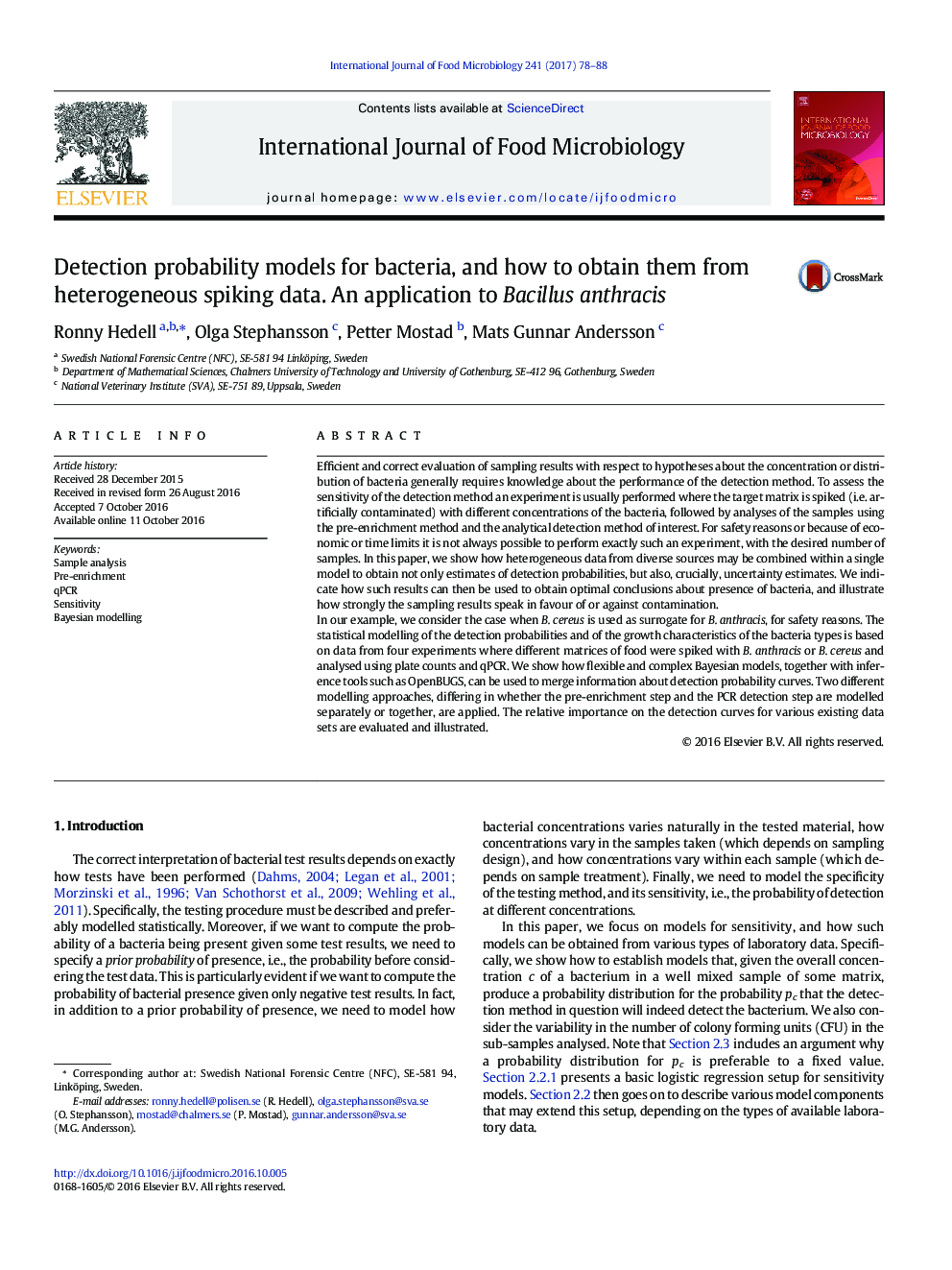| کد مقاله | کد نشریه | سال انتشار | مقاله انگلیسی | نسخه تمام متن |
|---|---|---|---|---|
| 6289646 | 1616542 | 2017 | 11 صفحه PDF | دانلود رایگان |

- Detection curves for bacterial detection are derived using Bayesian modelling.
- We show how to merge and use results from heterogeneous spiking experiments.
- Differences between B. anthracis and B. cereus and several food matrices were found.
- The interaction between matrix and bacteria type was non-ignorable.
Efficient and correct evaluation of sampling results with respect to hypotheses about the concentration or distribution of bacteria generally requires knowledge about the performance of the detection method. To assess the sensitivity of the detection method an experiment is usually performed where the target matrix is spiked (i.e. artificially contaminated) with different concentrations of the bacteria, followed by analyses of the samples using the pre-enrichment method and the analytical detection method of interest. For safety reasons or because of economic or time limits it is not always possible to perform exactly such an experiment, with the desired number of samples. In this paper, we show how heterogeneous data from diverse sources may be combined within a single model to obtain not only estimates of detection probabilities, but also, crucially, uncertainty estimates. We indicate how such results can then be used to obtain optimal conclusions about presence of bacteria, and illustrate how strongly the sampling results speak in favour of or against contamination.In our example, we consider the case when B. cereus is used as surrogate for B. anthracis, for safety reasons. The statistical modelling of the detection probabilities and of the growth characteristics of the bacteria types is based on data from four experiments where different matrices of food were spiked with B. anthracis or B. cereus and analysed using plate counts and qPCR. We show how flexible and complex Bayesian models, together with inference tools such as OpenBUGS, can be used to merge information about detection probability curves. Two different modelling approaches, differing in whether the pre-enrichment step and the PCR detection step are modelled separately or together, are applied. The relative importance on the detection curves for various existing data sets are evaluated and illustrated.
Journal: International Journal of Food Microbiology - Volume 241, 16 January 2017, Pages 78-88